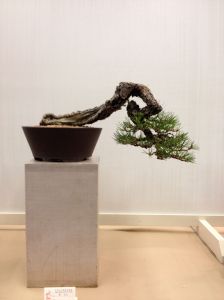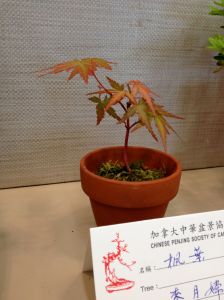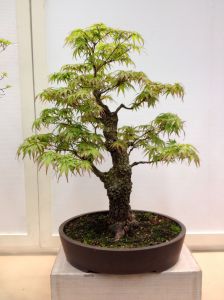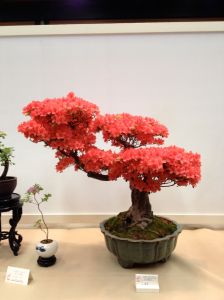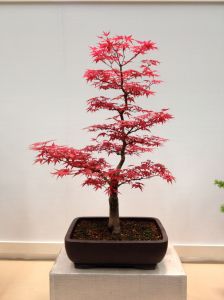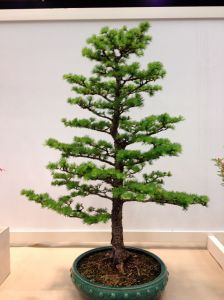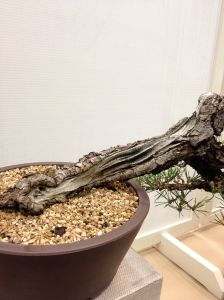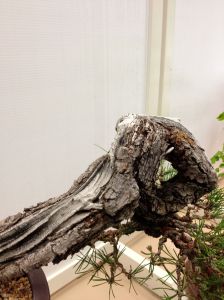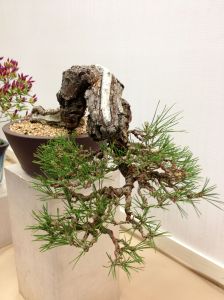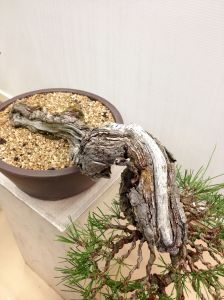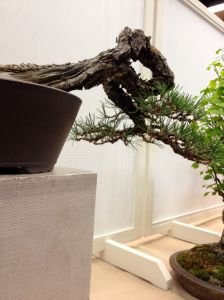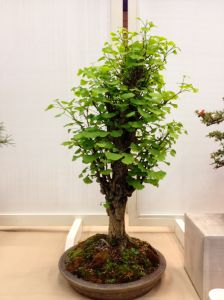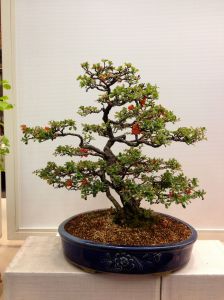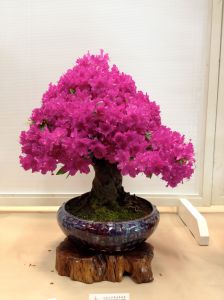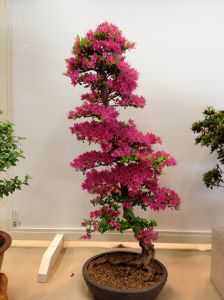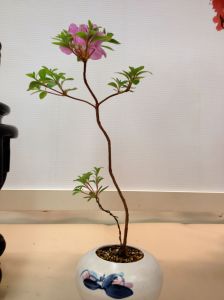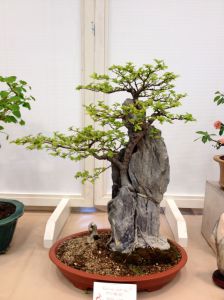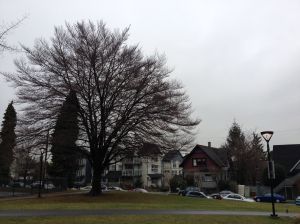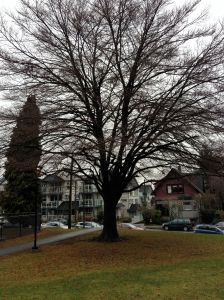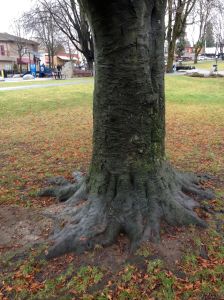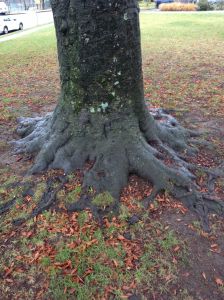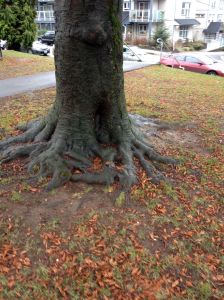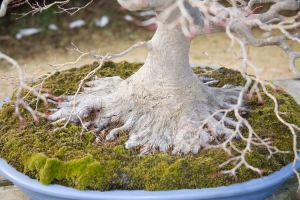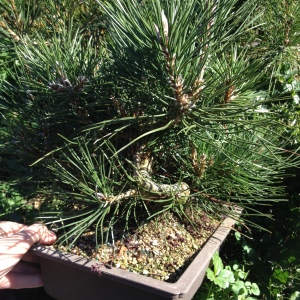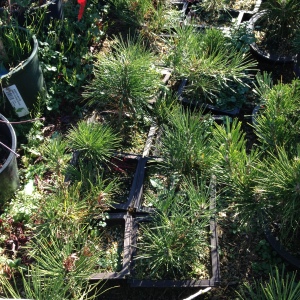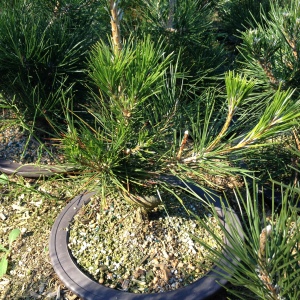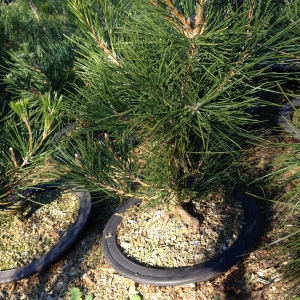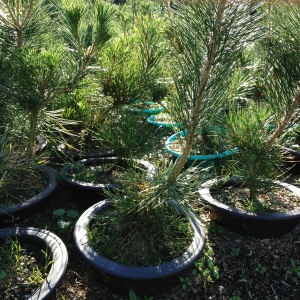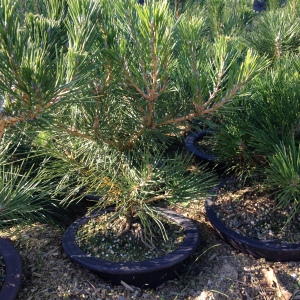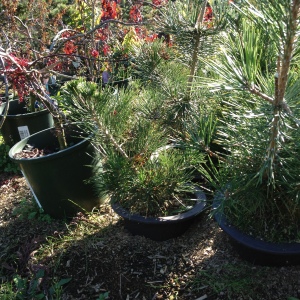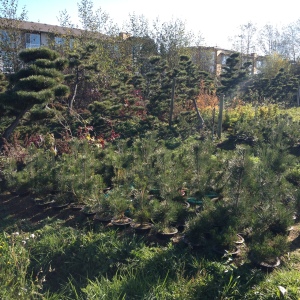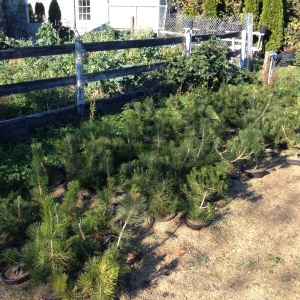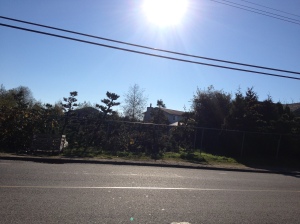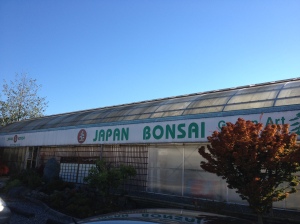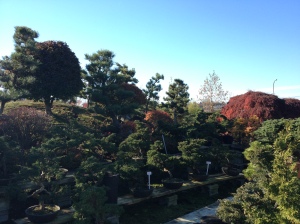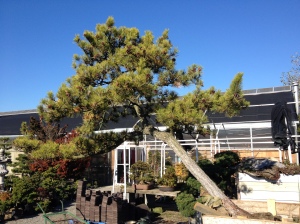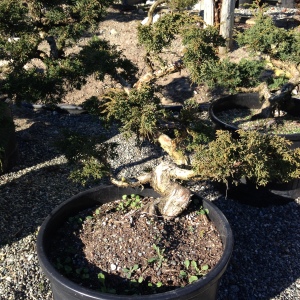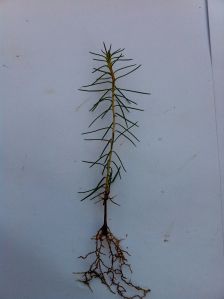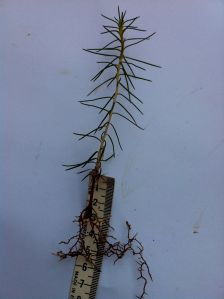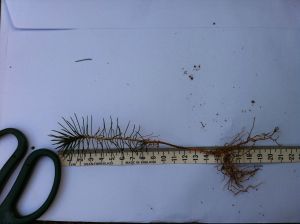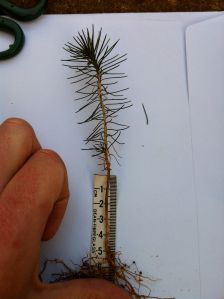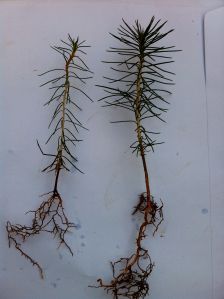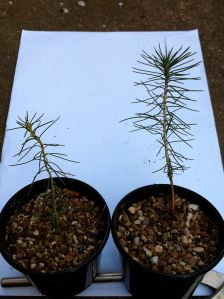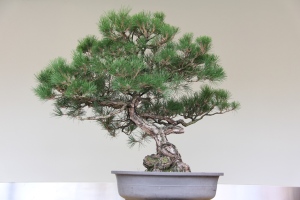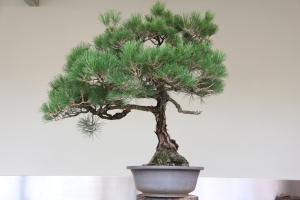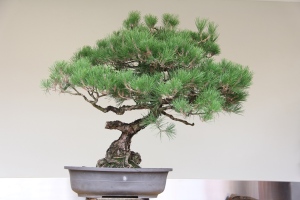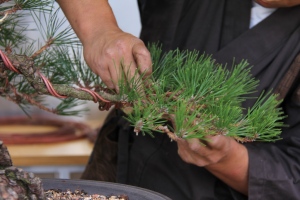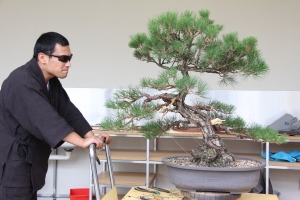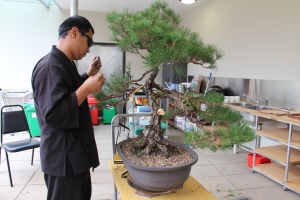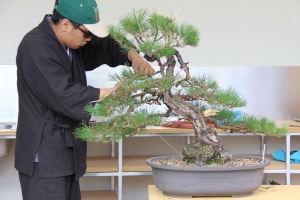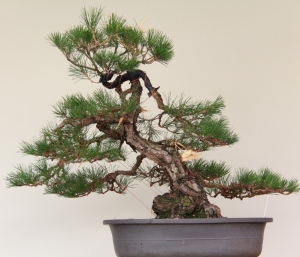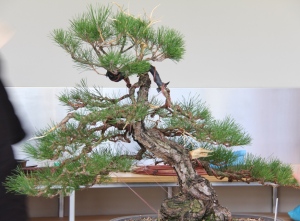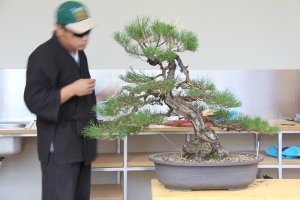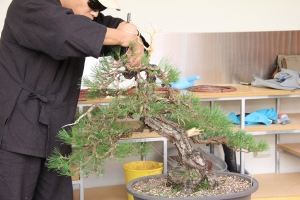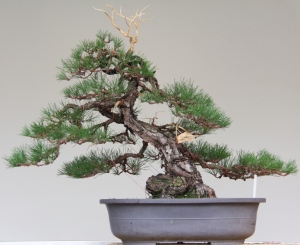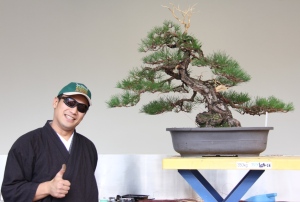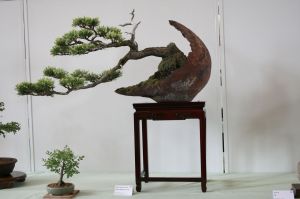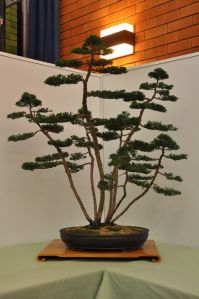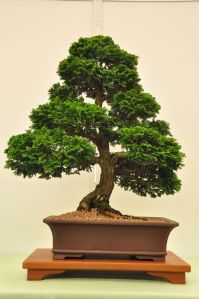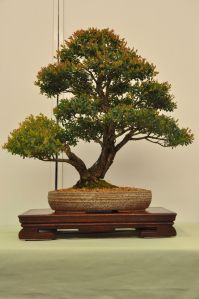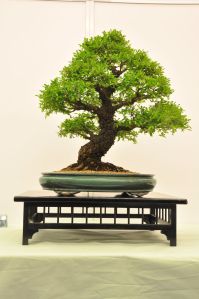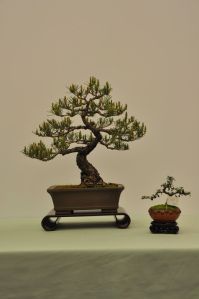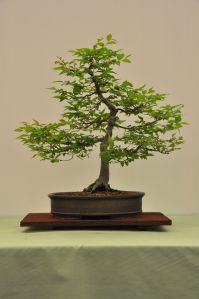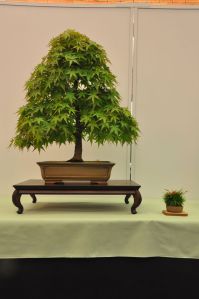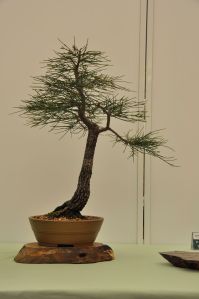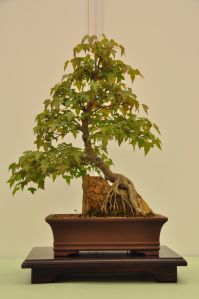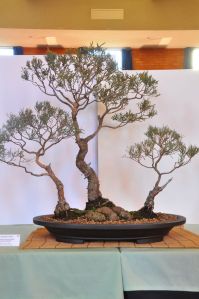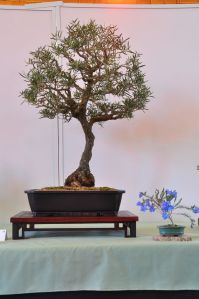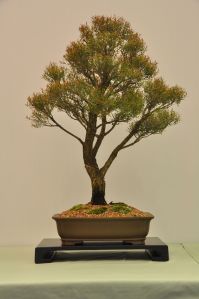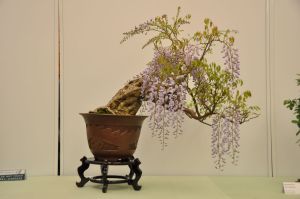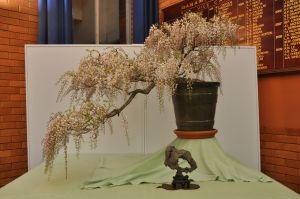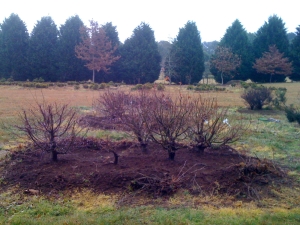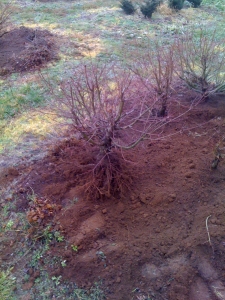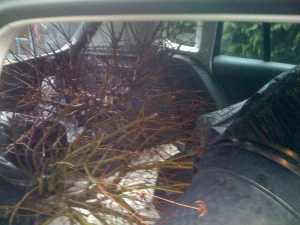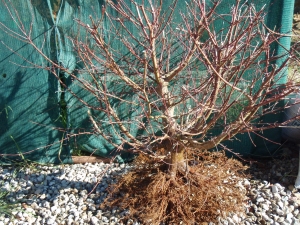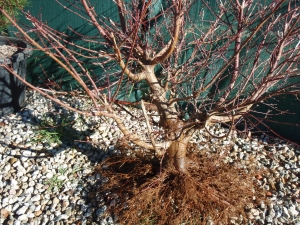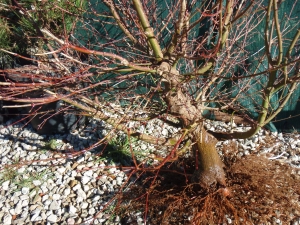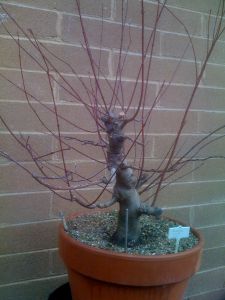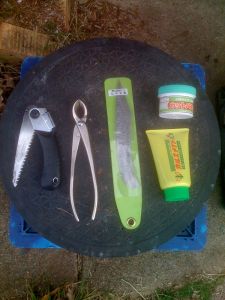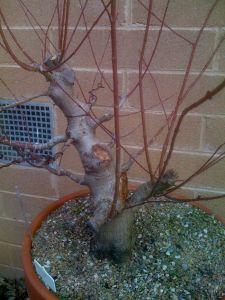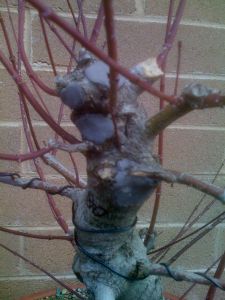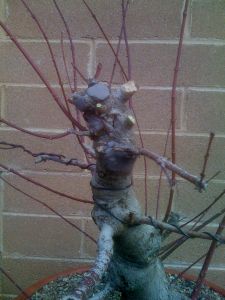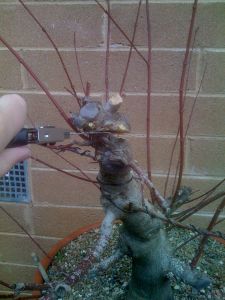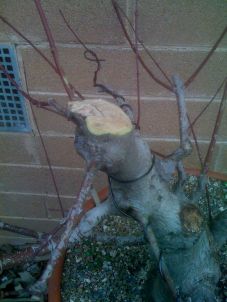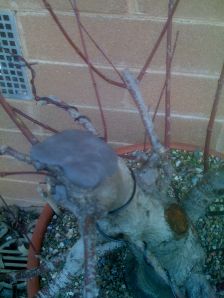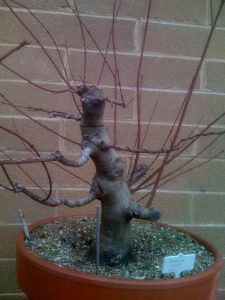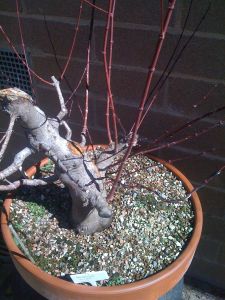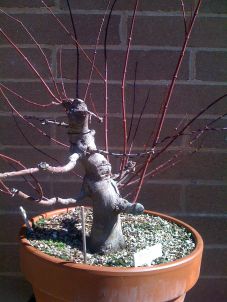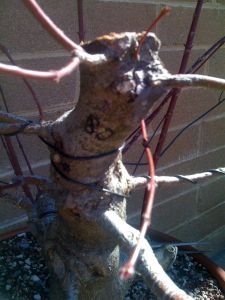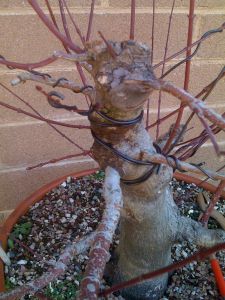I recently presented a talk on Autumn Needle Work on Japanese Black Pine. Many members of the Canberra Bonsai Society enjoyed the talk so I thought I’d add the notes here.
The following are the techniques that I use on JBP at this time of the year, having learnt them from Boon Manakitivipart. I advocate finding someone with the best pine bonsai that you have seen, find out what they do, and do it diligently. If you try to follow everything everyone does, you will just get lost. Boon had the best pine bonsai that I had ever seen, now mine are getting better.
In Canberra, this work can be done anytime from mid-late Autumn (April-May) to when the buds are opening in spring (July-August). If you use these techniques too early the new ‘summer’ needles may be too soft and are very easy to snap off, even by brushing with your hand. Again, this work is not time imperative like decandling, it can be performed as long as the tree is dormant. It is better to wait for the needles to harden off than do it too early and have the tree’s health suffer.
The aim of this work is to clean up the tree for next spring. The tasks that we do are:
- Old needle removal;
- Bud selection; and
- New needle reduction.
Before work begins
One of the first things to learn in pine care is how to handle the tree. We don’t come at the tree with fingers spread wide, ‘Poking’ at it. Treat a pine like you would pat a dog, with the lay of the needles (fur). Use your tweezers to get into the tree, lay the needles down and make space for your hands. This avoids bending the needles, and causing them to snap. The needles will look fine, but in 2 weeks they will brown off and die. Learning the proper handling techniques is about respecting your tree.
Another tip for pine work is to spray a fine mist of water on the needles before you start working. This will reduce the amount of sap that will get stuck to your fingers and tools.
Old needle removal
This consists of removing last year needles. The idea is to let more light and air into the interior of the tree, stimulating back budding. Without back budding, the tree will get leggier and leggier.
We remove the old needles to promote adventitious buds. Adventitious buds are buds that break without needles being present, that is, on bare wood. We preference adventitious buds over needle buds because they can break along the entire length of the branch, needle buds will only ever break as far in as the needles go. Saying this, if you have needle buds close to the trunk, do not remove them, eventually you may cut back to this point to induce more taper in the branch. It is highly unlikely that you will get adventitious buds on the trunk, so don’t count on it.
The technique
- Firstly, when removing needles, start at the top of the tree and work down. As you work down the tree, the needles that you remove will stack on the lower part of the tree. As you continue, you will clean these needles off the tree. If you start at the bottom and work up, you will then have to go back and clean the entire tree of stacked needles.
- Remove all needles from the past spring, leaving only summer needles, and needles on weak interior buds.
- The way to tell a spring needle from a new summer needle, is the generally colour and length, but also the way it is growing. If it comes out almost straight from the branch it’ll be an older needle. Spring needles may be shorter and a brighter green.

Note: This picture details a tree that hasn’t be decandled
- A tip to ensure that you do not miss any old needles is to work systematically. Start at the left hand side of a branch and work to the right, this will reduce the chance of missing any old needles.
Bud selection
After decandling, we usually get between 1-4 buds. During summer we leave them to grow uninterrupted all season so no one bud gets excessively strong. Now is the time to thin back to 2 buds. We thin back to 2 buds to avoid excessive thickening, the same as in all bonsai, we want to avoid reverse taper.
The technique:
- Depending on the size of the tree, I mentally divide the tree into three sections. The top is the strongest, the middle and lower exterior is of mid strength, and the interior is weakest.

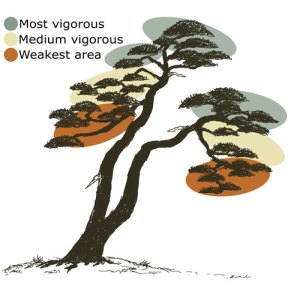
New needle reduction
Once we have completed old needle removal, and bud selection, we move onto new needle reduction. This task is again used to even out the comparative strength of different areas on the tree. We pull needles in areas that we do not want budding, for example the bottom of the branch.
The technique:
- We remove upward and downward growing needles, preference side-to-side growing needles.
- We remove more needles in stronger areas of the tree, and remove fewer needles in weaker areas of the tree.
- The number of needles kept on each bud depends on the vigour of the tree, on strong trees take more, on weak trees take less, but a rule of thumb is:
- 7-10 pairs on the top, that is the strongest part;
- 10-15 pairs on the middle/bottom of the tree, the weaker parts; and
- All needles on the interior and very weak parts.
- If you encounter a pair of buds, one significantly bigger than the other, take more needles from the larger one.
- If you plan to wire the tree, leave a few extra pairs of needles on it, because no matter how hard we try, we will break some when we wire.
Additional Resources for Pine work
If you are after additional information on the seasonal techniques used in Japanese Black Pine care, I recommend Boon Manakitivipart’s DVD series in the subject. This four part series outlines all of the necessary care techniques for growing great Japanese Black Pine bonsai. The DVDs can be purchased from me (Australian readers) or at www.bonsaiboon.com
